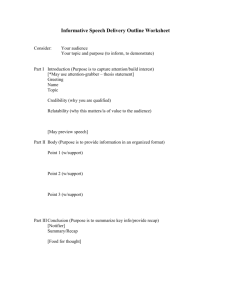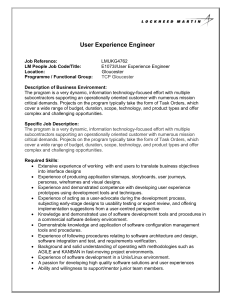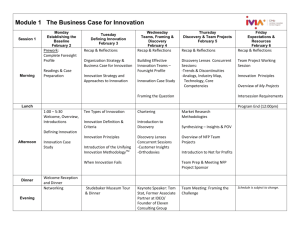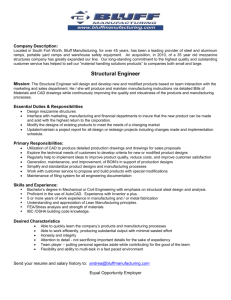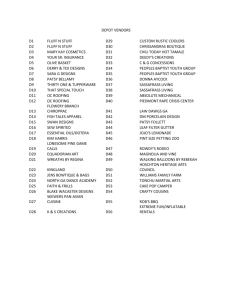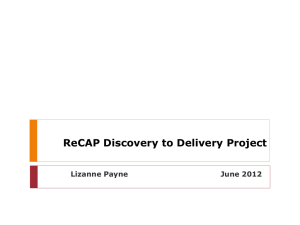Who Designs and Develops Products?
advertisement
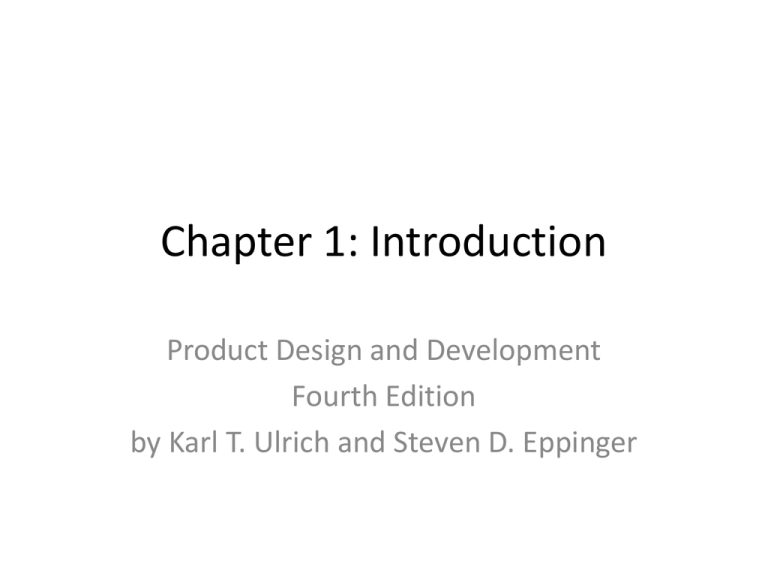
Chapter 1: Introduction Product Design and Development Fourth Edition by Karl T. Ulrich and Steven D. Eppinger Objectives • Recap from session – 1 – Presentation feed back – Universal design – state some examples • • • • Importance of Product Development Scope of Development Efforts Role of Structured Methods Benefits of Integration Recap • Recap from session – 1 – Presentation feed back – Universal design – state some examples,…project ideas? Refer slide: A design perspective on manufacturing competitiveness.. Cost, Quality and Time to market are design problems more than manufacturing problems. …….Why? Importance of Product Development Is it important at all? ……Why? Note the goal: “The economic success of manufacturing firms depends on their ability to identify the needs of customers and to quickly create products that meet these needs and can be produced at low cost.” Is it a marketing problem?......Why? Is it a design problem?......Why? Is it a manufacturing problem?.......Why? Note : It is a product development problem involving all of these functions and more…. Importance of Product Development This course deals with a collection of methods intended to enhance the abilities of cross-functional teams to work together to develop products. Points to ponder……w.r.t India: Where will you find such cross functional teams? If not then what? What are you doing now to overcome such limitations? In your School w.r.t your projects? See today’s Indian express (TNIE dated 27 July 2011): NASSCOM-Mckinsey Report. …..regarding employability of Indian graduates (both engg & non-engg) Characteristics of successful Product Development Profitability? …..”for-profit”enterprise?…. What about not-for profit enterprises?… Note: profitability is often difficult to assess quickly and directly High performance along specific dimensions: • Product Quality: • Product Cost: • Development time: • Development cost: • Development capability: Other stakeholders: …….product’s ability to create jobs? So…..Who Designs and Develops Products? • Marketing – interaction between firm and customers • Design – defines physical form to meet customer needs – Engineering design (mechanical, electrical etc.) – Industrial design (aesthetics, ergonomics, user interfaces) • Manufacturing – designs and operates the production system (extending to supply chain issues) Who Designs and Develops Products? Exh 1-2: Product development team for an electromechanical product of modest complexity Examples of engineered, discrete, physical products Duration & Cost of Product Development Note: External teams may be large The Challenges of Product Development • Trade-weight vs. manufacturing cost (e.g. airplanes) • Dynamics – Improved technologies, changing customer pref. • Details – Screws or snap fits • Time pressure – quick decisions without complete info. • Economics – Return on investment Plus….. • Creation – process intensely creative • Satisfaction of societal and individual needs • Team diversity – many different skills & talents • Team Spirit – colocated…..”physical or virtual” Structured Methods • The integrative methods to facilitate problem solving and decision making among people with different disciplinary perspectives. 1. First: they make decision process explicit, allowing everyone on the team to understand the decision and reducing the rationale of moving forward with unsupported decisions. 2. Second, important activities are not forgotten – “checklists” 3. Third, these methods are self-documenting (for future reference of newcomers) [The methods are a starting point for continuous improvement] Organizational Realities Assumption: Teams work in a conducive environment in support of organizational goals. Reality… • Dysfunctional product development teams. • Lack of empowerment of the team • Functional allegiances transcending project goals • Inadequate resources • Lack of cross-functional representation on the project team. Road Map

